Wetland Habitats
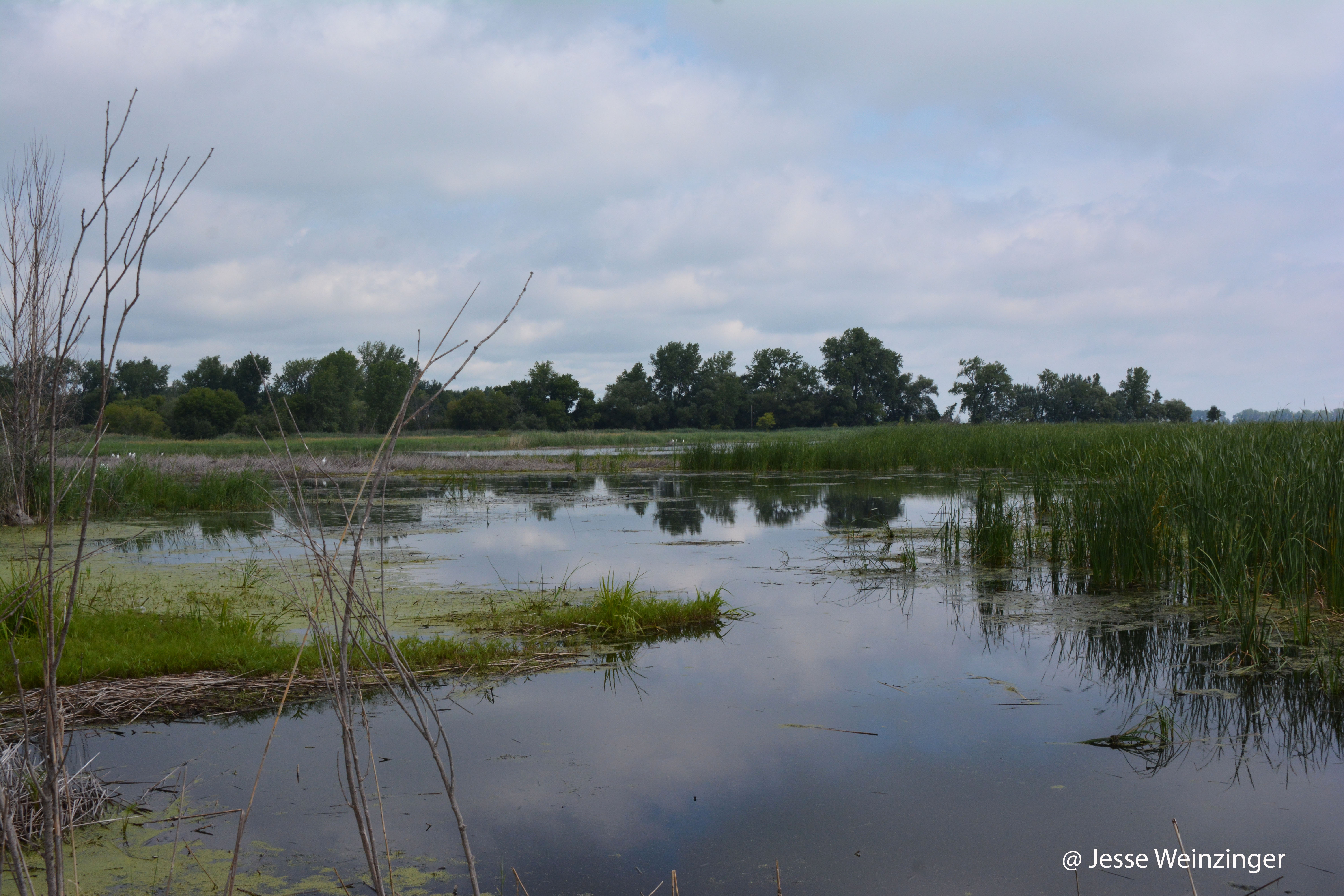
Emergent Marsh (high energy coastal)
Coastal wetlands dominated by emergent macrophytes along shorelines and bays comprise one of the most extensive habitat types in the LGBFR AOC. Soils are typically inundated for much of the year and consist of organic mucks overlaying circumneutral to alkaline bedrock. Exposure to waves creates a high energy environment that can be especially severe along north-exposed shorelines of the lower bay. These coastal wetlands, in turn, may provide a valuable ecological service by buffering wave effects and preventing shoreline erosion (Shepard et al. 2011).
Covering 20% of the LGBFR AOC, coastal emergent marshes are now characteristically dominated by two invasive species, common reed (Phragmites australis subsp. australis) and hybrid cattail (Typha × glauca). Reed canary grass (Phalaris arundicacea) is a frequent, invasive dominant of the inland zone of emergent marshes, and its dominance may continue inland to southern sedge meadow communities.
Preserving or promoting a natural disturbance regime should be a part of long-term conservation of high energy coastal marsh. In the LGBFR AOC, diked wetlands provide some opportunity to control wetland disturbance dynamics, but mismanagement of these artificial systems might promote the spread of invasive species and reduce the importance of connected coastal wetlands as fish habitat (Wilcox and Whillans 1999, Herrick and Wolf 2005, Monfils et al. 2015).
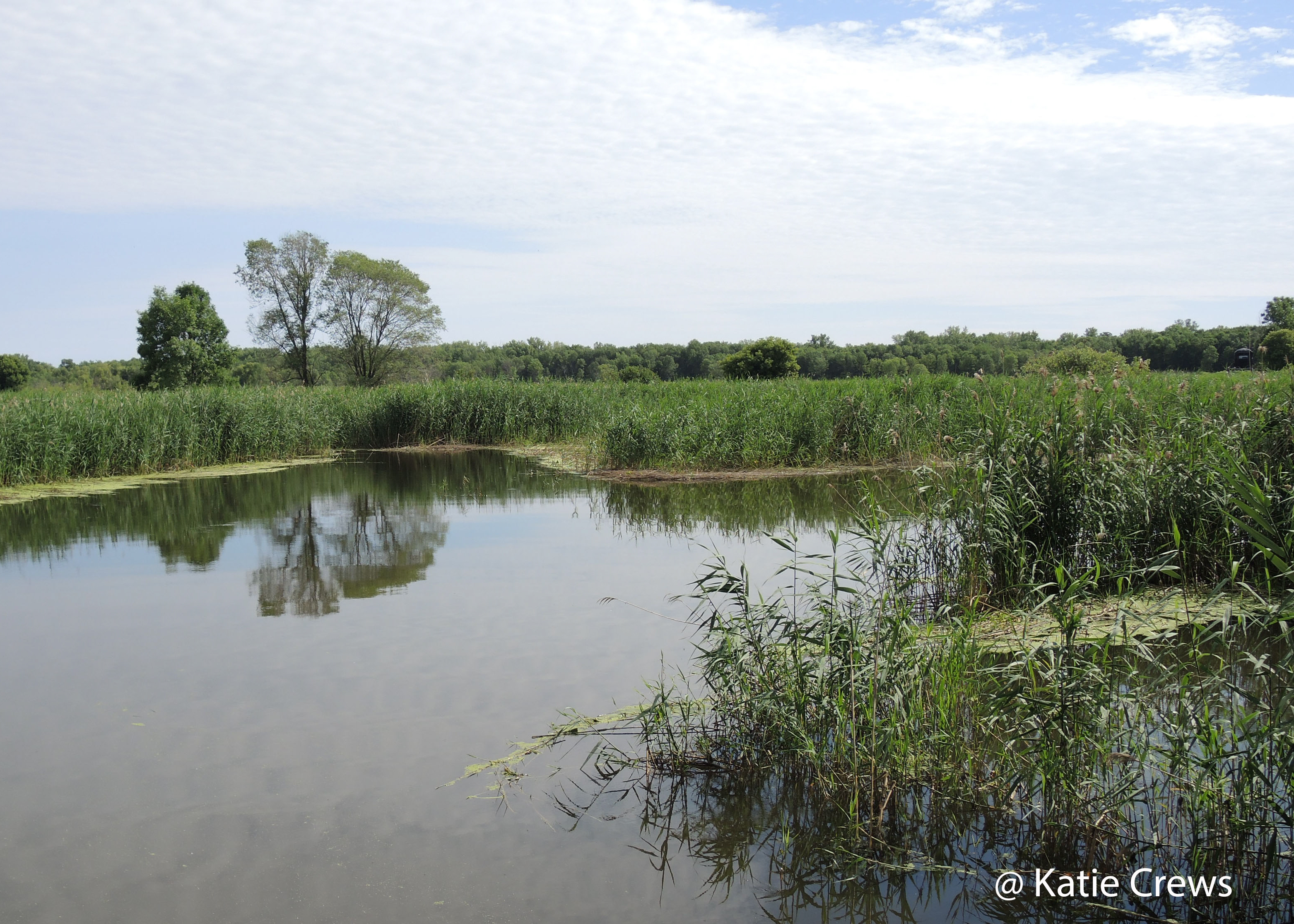
Emergent Marsh (inland)
This community is an open wetland on circumneutral to alkaline, mineral soils around the margins of ponds and lakes and dominated by emergent macrophytes. As is characteristic of emergent marshes, the soil is inundated with water for much of the year. Native plant diversity, including both emergent and submergent vegetation, creates a healthy ecosystem. The plants provide oxygen and filter the water by absorbing certain nutrients and preventing algal blooms. Inland emergent marshes also provide safe spawning habitat for fish and nesting habitat for birds and amphibians.
-2.jpg)
Emergent Marsh (riparian)
This community is an open wetland on mineral soils along the banks of slow-moving rivers and streams. Marsh soils are inundated for much of the year, and the vegetation consists of emergent macrophytes. Covering about 2% of the LGBFR AOC, riparian emergent marshes are now dominated by three invasive species: common reed (Phragmites australis subsp. australis), reed canary grass (Phalaris arundinacea) and hybrid cattail (Typha × glauca). Riparian emergent marshes also provide spawning habitat for fish and nesting habitat for birds and amphibians.
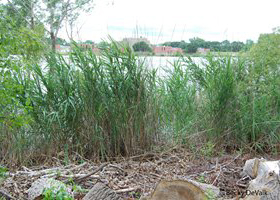
Emergent Marsh (roadside)
This plant community consists of species characteristic of emergent marshes growing in wet, roadside ditches that often hold standing water until mid-summer. The encroachment of woody species into such areas is typically suppressed by mowing. Covering about 1% of the LGBFR AOC, roadside emergent marshes are often invaded by common reed (Phragmites australis subsp. australis), reed canary grass (Phalaris arundinacea), hybrid cattail (Typha × glauca) and narrow-leaved cattail (Typha angustifolia).

Hardwood Swamp
Hardwood Swamps are forested wetlands dominated by broadleaf, deciduous trees. Typically, hardwood swamp communities occur along lakes, streams, and especially in lowland areas that are poorly drained. Soils characteristic of this habitat are hydric, loamy sands. Many amphibians and birds use hardwood swamps for breeding habitat, while dozens of migratory songbird species feed on insects and berries in these forests during spring and fall migration.
Hardwood swamp is the most abundant habitat type within the LGBFR AOC, covering about 30% of the land.
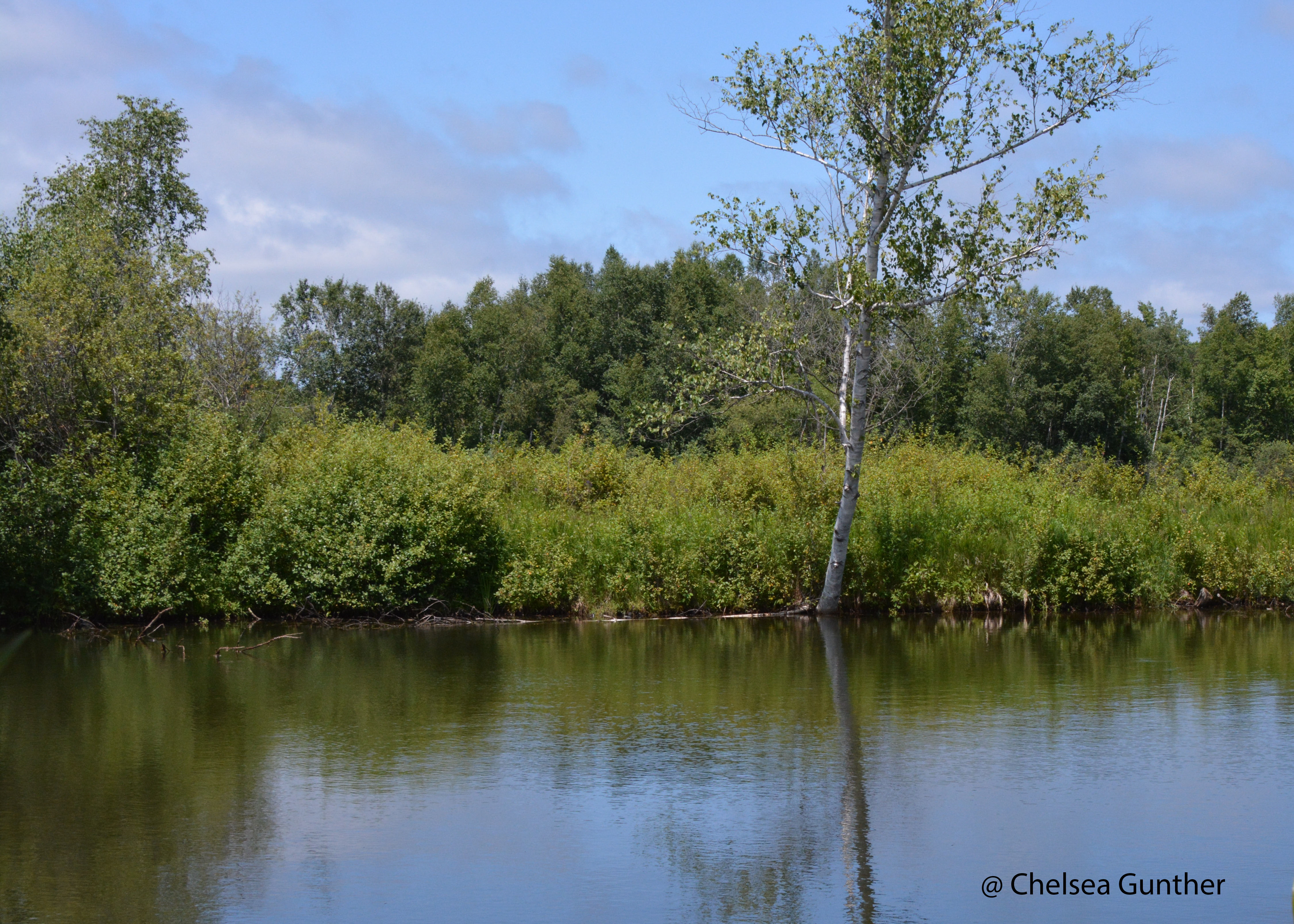
Shrub Carr
Shrub carr covers around 4% of the LGBFR AOC and is a transitional community type that occurs between open wetlands and forested wetlands. The native herbaceous species composition of LGBFR AOC shrub carr is similar to that of southern sedge meadows, and these two plant community types often appear to form a mosaic in less disturbed coastal habitats.
More About Shrub Carr
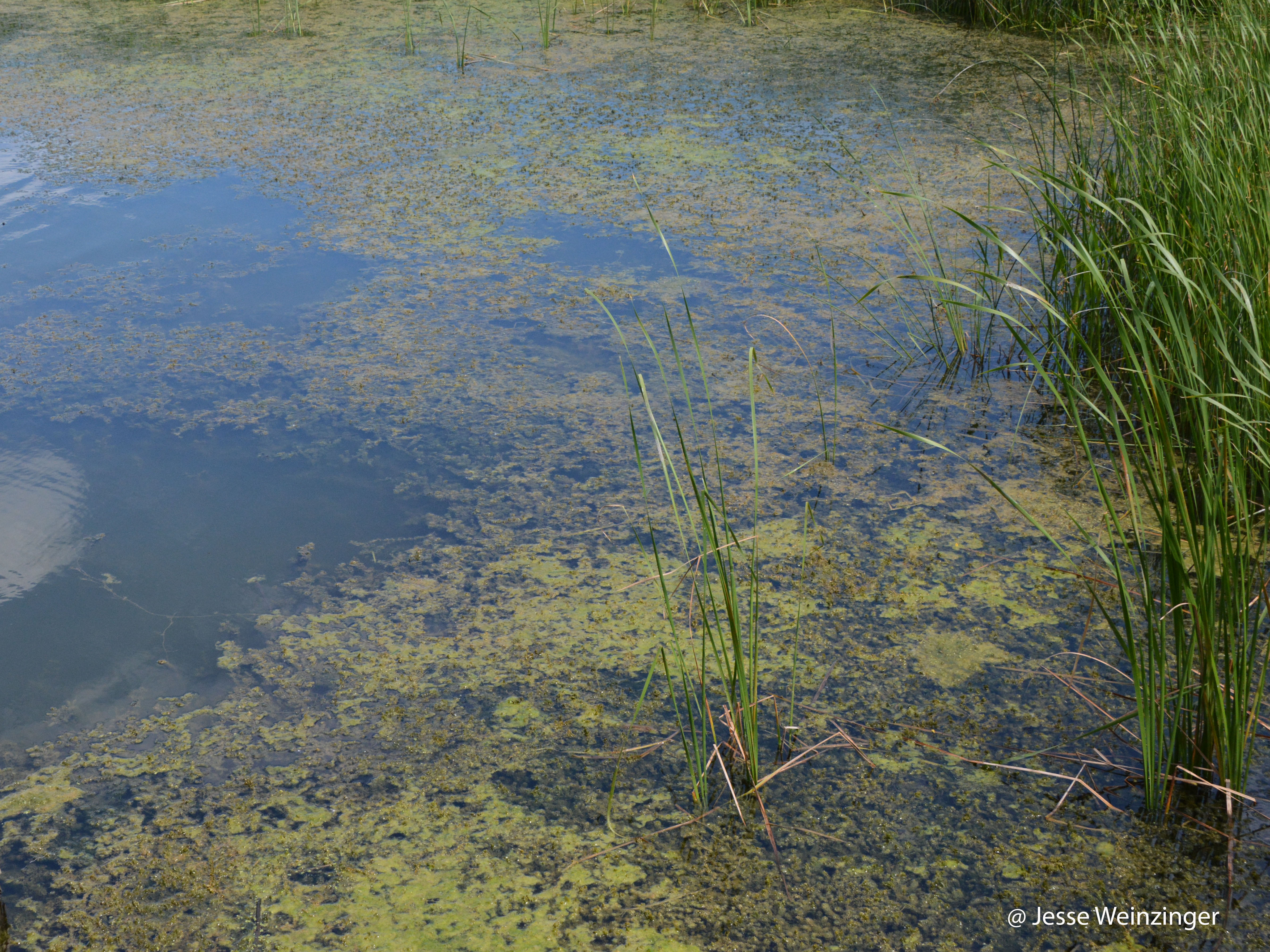
Submergent Marsh
Submergent marsh, an aquatic habitat comprised of submerged aquatic vegetation (SAV), occurs in lakes, ponds and rivers, commonly at depths between 0.2 m and 3.0 m. In the LGBFR AOC submergent marsh accounts for about 5% of the study area that we have defined.
Much like emergent marsh communities, submergent marshes may help enhance water quality by acting as a nutrient sink and enhancing nitrification/denitrification processes in the benthos (Kufel and Kufel 2002). The plant community of submergent marshes stabilizes lake and river bottoms, reduces shoreline erosion and improves water clarity by reducing resuspension of sediments (Dennison et al. 1993). Many fish species use submergent marshes for feeding, spawning and predator avoidance (Rozas and Odum 1988). Ducks and waterfowl forage on many SAV species, especially eel grass (Crowder and Bristow 1988, Knapton et al. 1999).
The potential for improving the condition of SAV in the LGBFR AOC seems to be high. At Point au Sable, for example, elimination of dense, monotypic Phragmites stands between 2012 and 2015 coupled with rising water levels led to a dramatic re-establishment of native SAV in the coastal lagoon, without any artificial planting or translocation of species. Patrick et al. (2016) found that shoreline armoring reduces the growth of SAV in Chesapeake Bay, suggesting that removal of bulkhead, rip-rap and other artificial shoreline features may be an effective contributor to increased extent of SAV in estuarine ecosystems like the LGBFR AOC.
More About Submergent Marsh

Wet Meadow
Wet meadow largely follows the WDNR Southern Sedge Meadow natural community description, described as open wetland in which various sedges (e.g., Carex spp.) and Canada bluejoint grass (Calamagrastis canadensis) dominate. However, this plant community definition has been expanded to additional characteristics observed in wet prairies, wet-mesic prairies, conservation meadows, etc. as an attempt to focus more on the functions provided by these transitional habitats (e.g., pollinator, nesting habitat, etc.).
Wet meadow is one of the rarest plant community types today in the LGBFR AOC. Mostly occurring between coastal emergent marsh and shrub carr at or near water level in the Great Lakes coastal zone (Curtis 1959), this open wetland type is dominated by Canada bluejoint grass, tussock sedge (Carex stricta) and common lake sedge (C. lacustris).
A threat to the diversity of southern sedge meadow habitats in the LGBFR AOC is the encroachment of shrubs and trees. Occasional fires prevent woody succession, but drainage ditches and fire suppression have allowed shrubs and trees to invade and remain established in areas that were once open wet meadows.
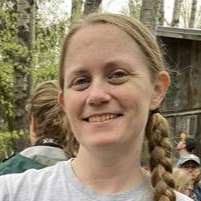
Ask an Expert
As a proud alumna of UW-Green Bay, Erin Giese understands the need to provide hands-on experiences for students. She's committed to training the next generation of scientists who help to improve the LGBFR AOC. If you have questions, she can help!